FOW: How to Teach New Players + Fog of War Cards
I know I’m late to the party on this topic, but I finally got in a couple of games with the Fog of War cards.
As a teacher, I use games such as Flames of War in my Military History course. 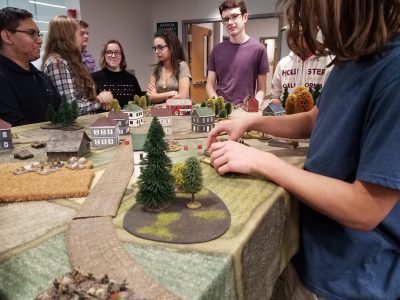
Objectives are placed and platoons assigned. These games help the students learn about different equipment types and generic tactics. In addition, the games help get the students engaged in the lessons and make my Military History course fun.
One of my students, Malcolm, is an avid Flames of War player. He picked up a half-painted army from his brother and is working to finish painting it.
I offer extra credit to any students that come in on a Thursday or Friday to play games in the school library (photo below).
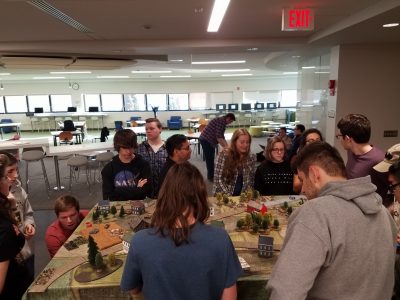
Attendance at these extra credit extracurricular games varies from four students near the end of semesters, up to more than a dozen when exams aren’t increasing study times.
In situations like this, where a lot of new and inexperienced players are jumping in, I found a couple of tricks worked well so everyone had a good time and got a grasp of the rules. This advice is probably old hat for experienced GMs at conventions like Cold Wars, but for those trying to get things started at your local club, I’ll offer a few pointers. I’m also a high school teacher, so I’m used to a group that is always checking their phones, and generally has a short attention span.
Rule #1 – Have fun
Obviously, that’s the point of games like these, but the more competitive among us can lose sight of that in our excitement to snag a new opponent. If you beat in another player’s army or find ways to rules lawyer them to death, it won’t be fun for them and they won’t be back. This isn’t to say you don’t play to win, but that concern should always be secondary.
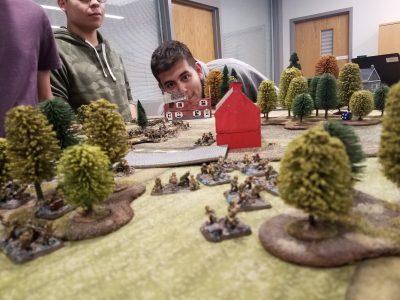 Rule #2 – Keep it simple
Rule #2 – Keep it simple
A rulebook this long, (especially for the uninitiated) can be intimidating. Explain the goals of the game (objectives and breaking a company) and how to win or lose. Explain the three steps of the game (moving, shooting, assaulting) and let them start moving pieces around or ask questions.
If you stand there and lecture them about every rule at once, they will likely absorb about 1/4 of what you say. The 17-year-old’s attention span is shorter than the average adult’s. The time a teen will devote to such depends, obviously, on the student. I’ve found that it’s usually around 15 to 20. Once they are engaged in the process, it’s different. Take it from someone who has been standing in front of some harsh critics for the past 12 years: bite-sized chunks are the way to go.
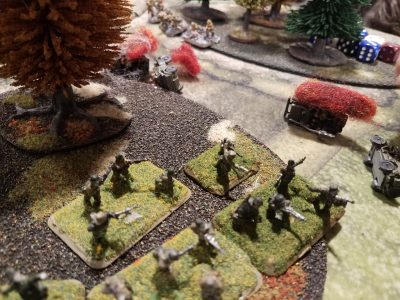
Rule #3 – Let them do it
As tempted as we may be to micromanage a rookie who is about to make a tactical error, try to avoid doing so and let them make some mistakes. Some of my best learning experiences in this game were when something went horribly wrong.
Obviously, a post-mortem at the end is going to be helpful. But for new players, I wouldn’t be overly concerned about the finer points of tactics, such as to stay out of LOS of an observing team or using movement orders to get just outside of assault range. Let the game happen, with all the glorious mess that includes.
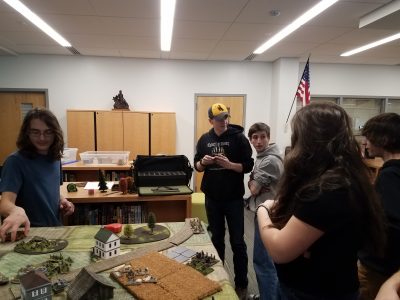 Rule #4 – Give everyone something to do
Rule #4 – Give everyone something to do
Since this game day was well attended, each student had command of a platoon and got to drive their dudes around the table and machine gun whichever target they preferred. When people get involved and actively participate, they will remember more, and enjoy it more as well. Every student at this table got to roll dice and shoot at enemy platoons.
All this brings us back to the Fog of War cards. The results of using these in a game with new players was pretty hilarious. There was an unpredictable back and forth, which kept the game going, and even had people cheering and trash talking each other. Players on both sides of the table laughed and cheered.
The cards are obviously not for tournament play, but the flavor they give to a standard mission of meeting engagement is invaluable
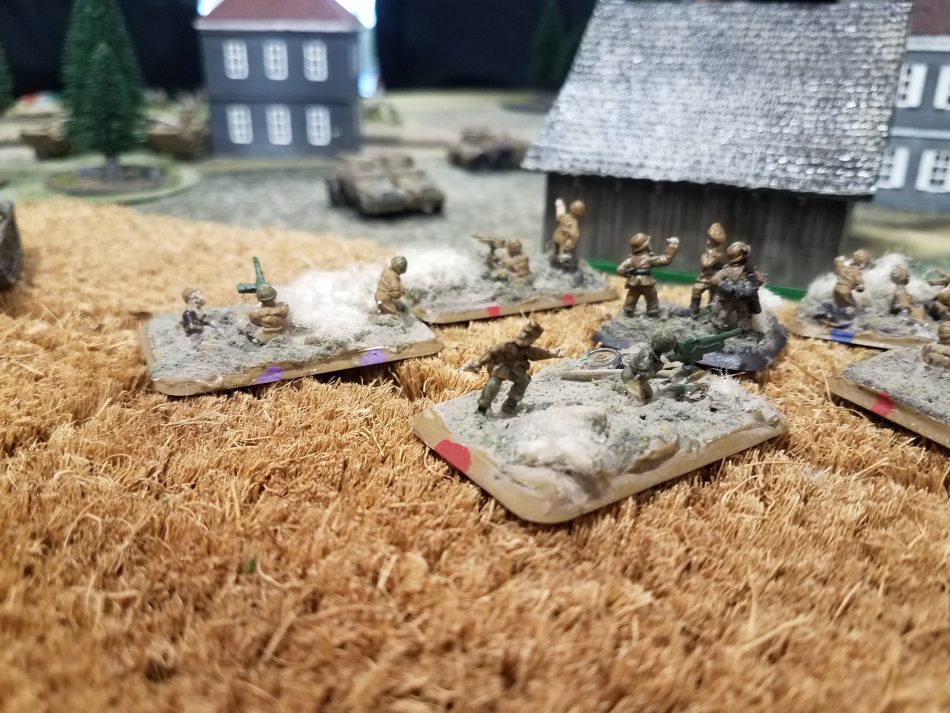
for showing people how much fun this game can be. Everyone has different itches when it comes to this hobby.
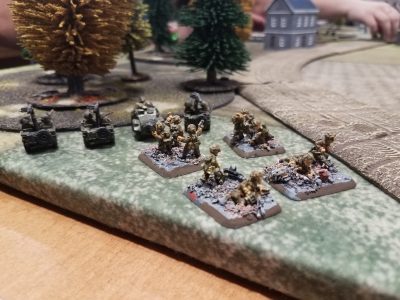
What originally hooked me about Flames of War was the gameplay. As I learned the rules I started to enjoy the tournament scene. But a casual game, where I get to put toys on the table and just see what happens, was just as much fun.
The Fog of War cards add an extra dimension to that casual play. A battle can turn on the flip of a card or a clever selection of an objective placement. This can keep players involved because it’s always possible to turn the game around when these are used.
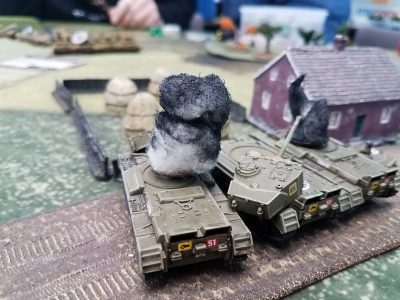
I find the Fog of War cards fall into three categories:
- Cards that push everyone towards the middle of the board and into direct and immediate conflict with each other
- Cards that encourage trying to destroy specific units
- Cards that reward mobility and the use of Recce or HQ Units.
So preparing for a game with these cards encourages a player to build a list that is
A. Mobile
B. Has some flexible core units
C. Can take all comers (combined arms)
So while it is a fun chaotic blast to play with these cards; for the new player experiencing the scrum, they are indirectly learning some interesting things in the process other than just an enjoyment for the game. In Part 2 I’ll post the full batrep with Malcolm and his Germans to show you how a full game went.
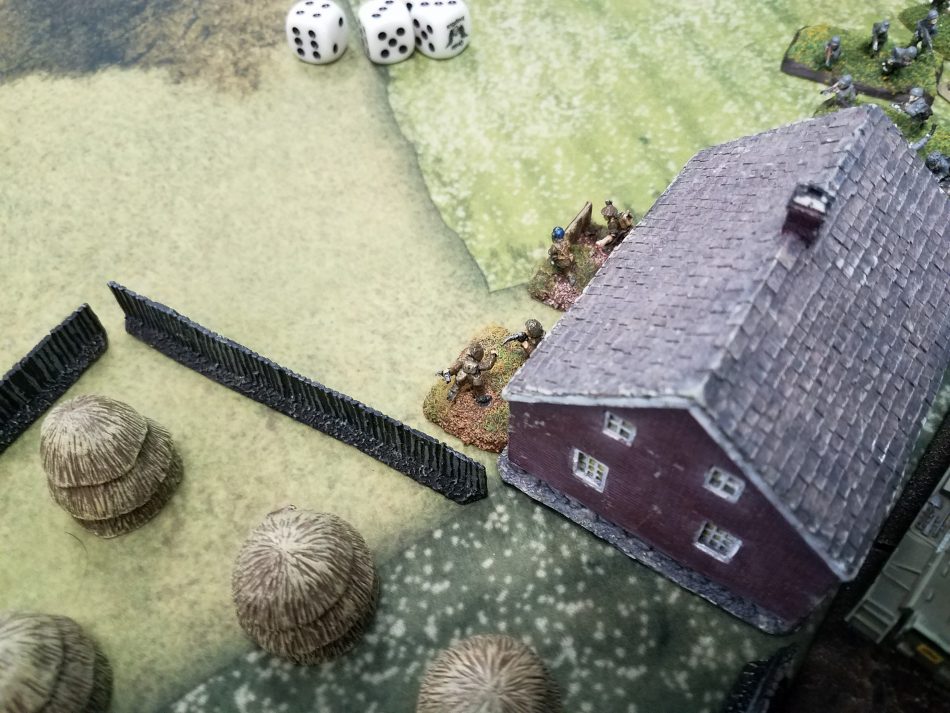

Cool article, good tips in there. Using FoW as a teaching aid seems like a great idea to get the kids interested. I really wish a class like this had been available to me as a HS student.
Tom
There is a grant program sponsored by HMGS to encourage just what you are doing with FOW in school.
Contact me at secretary@hmgs.org or my email below